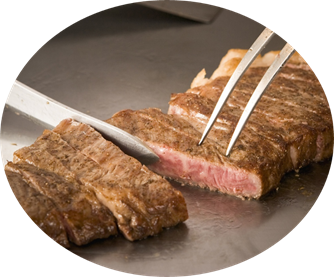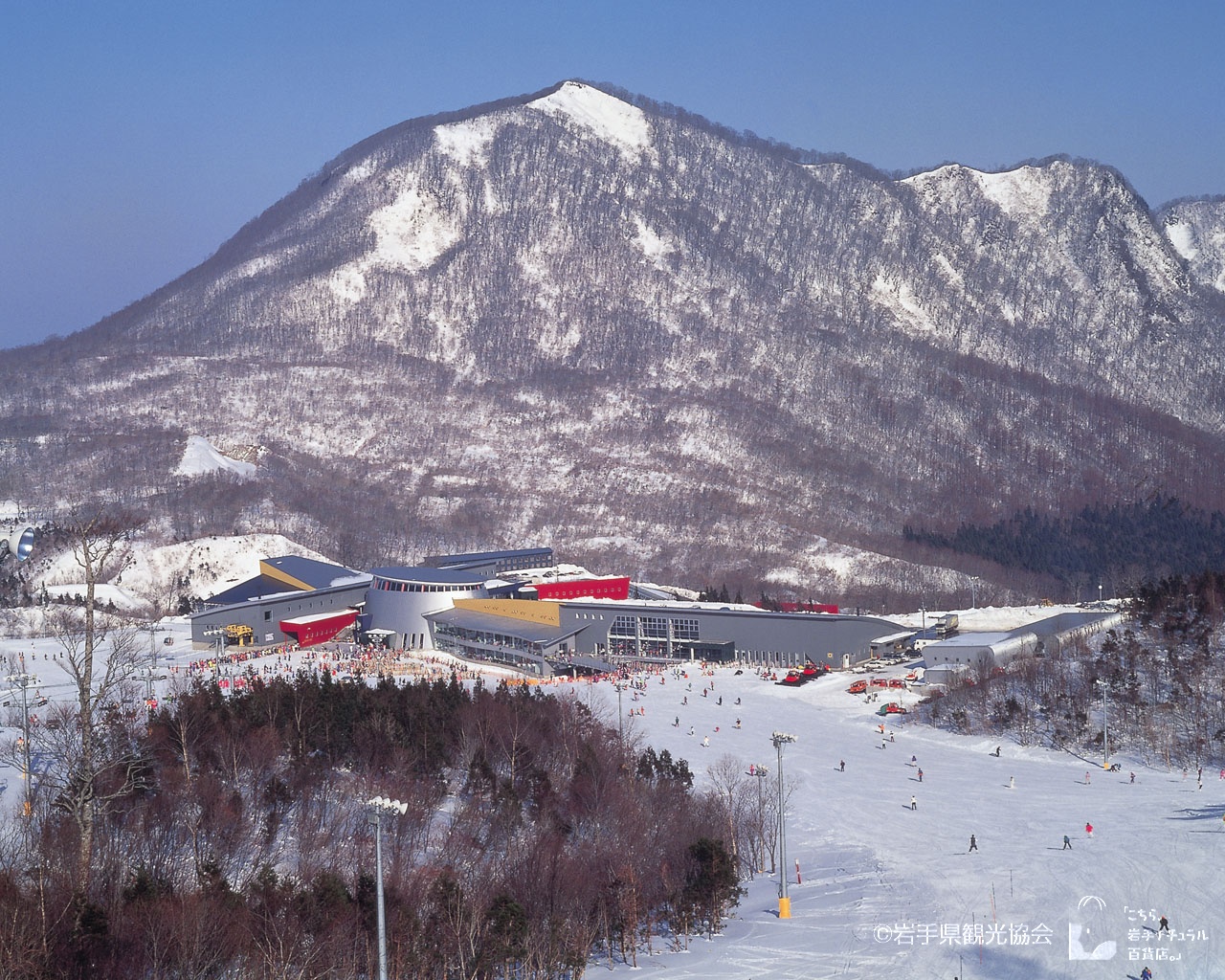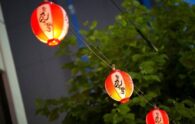The Linear Collider Workshop (LCWS) 2016 is coming to Morioka, Iwate, Japan during the first full week of December 2016. Hundreds of physicists, researchers, government representatives, public relations specialists, and many others will descend to a city of 310,000 that is relatively close to where the candidate site for the ILC. The conference, its workshops, and some friendly networking will occupy plenty of the participant’s time during their stay.
Still, one can assume that many of the conference goers will take in some sightseeing and tourism in Iwate, one of Japan’s largest prefectures. Many participants will be happy staying in Morioka proper, but should you desire to venture a bit further, I can offer two suggestions close to the proposed site in Southern of Iwate that would be of definite interest.
HIRAIZUMI: PILLAR OF CULTURE
All right folks, please cue the Strauss music from 2001: A Space Odyssey for this introduction –to the beginning of the movie where “Also Spake Zarathustra” with its tympanic rolls, and solo trumpet blares, introduces Paleolithic proto-humanoids and evokes imagery of rising suns, early tools, mankind’s drive to develop, and the monolith that is the driving force of the movie.
Like that monolith that towered over the epoch-making film, Hiraizumi towers over the south of Iwate both physically and metaphorically. Physically, Hiraizumi is a collection of temples, and other buildings and artifacts, set on and around a large hill on the plain that runs from Kitakami to Ichinoseki, seemingly woven into the fabric of the space it occupies. It is also metaphorically woven into a high spot of the culture of Southern Iwate. So much so, that as of 2011 it was placed on the UNESCO list of World Heritage Sites.
Cultural designation or not, there are few collections of ancient buildings north of Tokyo that are as numerous and elaborate at those found at Hiraizumi, some dating back to the twelfth century. Of course the prefecture of Iwate heavily promotes and supports it which has helped with developing a strong surrounding infrastructure and backing tourist –oriented industry connected to Hiraizumi, especially since receiving the UNESCO Heritage appellation, officially known as “Hiraizumi-Temples, Gardens, and Archaeological Sites Representing the Buddhist Pure Land”. In its 12th century heyday Hiraizumi was the capital of much of the Northern portion of Japan’s main island Honshu, and was considered every bit the equal of Kyoto.

The Pure Land Garden at Motsu-ji
It should go without saying that, Hiraizumi is quite an eye catcher. Even to the locals, who you think might be accustomed to it somewhat, the gold-leafed walls of Konjikido are stunningly beautiful. The main hall at the Chuson-ji Temple complex is part of national TV networks coverage of the first pilgrimage of the New Year attracting lines of worshipers – think of it as the local Times Square over the New Year with strong cultural and religious importance attached.
Hiraizumi is usually one of the first places foreigners new to Iwate are taken to. The sight of Konjikido, when Japan was still a fresh and exotic place on a warm summer day is still etched in my mind like it was yesterday, not eighteen years ago. As the years go by the visits for various reasons pile up, and almost unconsciously, I can really fathom the large place it holds in Iwate life, culturally, economically, and in many other ways its presence looms large.
To the visitor to Iwate who wants to experience uniquely “Japanese” culture, and may have just a day to do it in, it is a no brainer obvious choice. A half-day or a day visiting Hiraizumi will be well spent, I heartily recommend it.
 An Aside (of beef) (…and a Delicious One at That)
An Aside (of beef) (…and a Delicious One at That)
A visit to Hiraizumi will put you right next to the Maesawa district of Oshu City. The district is most famous for Maesawa Beef, which is my vote for best in the region, though it might not be quite as widely known as Kobe Beef. It does have a great reputation throughout the country, and receives prizes at repeated taste competitions of various sorts. For the tourist who is in the area for just a limited time, and growing peck-ish, how about making your one meal in the area Maesawa beef at one of the numerous establishments that offer it?

Unparalleled snow quality
GETO SKI AREA: SNOW… AND EVEN MORE SNOW AWAITS YOU
Moving on from the ancient and traditional Japan, I will now point you in the other direction. Technology-driven, and ultra-modern, complete with all the trappings of modern life.
One of Japan’s biggest secrets is its cold winters. For all its stereotypical image of crowded cities, skyscrapers, high-tech goods and world class shopping and all …the snow comes with them. Tons of the white flaky stuff falls all over just about anything north of Tokyo, and to the winter sports enthusiast, it is manna from heaven, or at least powder from Siberia. Many observers will tell you that it is some of the best snow in the world, and that the best skiing by far in Asia is in the Tohoku Region of Japan as well as Hokkaido, the northernmost island.
Perched near the hump of a lengthy ridge of the Ou Mountains in Southern Iwate, just outside of Kitakami is Geto Ski Area. Geto can lay claim to being the ski area that gets the deepest snowfall of any ski area on the main island most years, and it will collect 450 to 600 centimeters of light, flaky, powder snow that skiers and snowboarders will relish under their skis and boards. This winter it is scheduled to open on December 3rd, and close in mid-May. I do not recall a winter when Geto was not open before just about any other resort in the Region. There is no reason to assume it won’t meet this year’s target date to open and have a considerable amount of luxurious powder snow.
Geto is a medium―sized ski area with two gondolas, a high speed quad lift and two double chairs, a decent amount of beginner to expert terrain in addition to wooded areas that are patrolled in acknowledgement of the powder enthusiasts that will ski off-piste, and a reputation for the best night skiing in Iwate. The night skiing reputation comes from running their main gondola until the resort closes instead of letting customers freeze on chairlifts as the face the cold windy night on the slopes.
In addition the ski consumer will also receive ample accoutrements inside the ski area’s modern base lodge facility. The base lodge, with a long in door escalator taking skiers from the base/parking lot level to the lodge/lift level, a main meeting/ticketing area with slightly diagonal walls that remind me of the space station promenade from the Star Trek: Deep Space Nine television series, and a spacious cafeteria with large windows to gaze at the slopes with, and a food selection ranging from contemporary Japanese to Indian gives the ski consumer quite a bit of value for a moderate price. Geto becomes an even bigger bargain in dollar terms when it is compared to North American and European ski resorts.
Epitravelogue
I have given conference-goers only two choices, on the assumption that it is a short-term trip. One choice is for those seeking Japanese traditional culture and historical offerings and one is for the rugged, active, and hearty outdoor enthusiast. These two choices are just the tip of what the Tohoku iceberg offers, but with limited time to venture, they are South Iwate’s best.
Japanese
LCWS 2016~岩手県南に行こう!ILCサポート委員会 ディーン・ルーツラー
12月5日~9日、LCWS(リニアコライダーワークショップ)2016が岩手県盛岡市で開催されます。
何百人もの物理科学者、研究者、行政機関、報道機関などが、ILC建設候補地近くの人口約31万人の盛岡市に集まります。
参加者の方々は、滞在中、会議や分科会、交流で忙しいと思いますが、岩手は日本有数の広い県であり、中には観光や旅行をしたい方もいると思います。多くの参加者が盛岡に滞在中、楽しく、さらに散策したいと思ってもらえるよう、岩手県南のILC建設候補地付近にある次の2ヶ所をお勧めします。
平泉~県南にある文化の支柱
さて、『2001年宇宙の旅』のあの名曲を再生して想像しましょう。映画の冒頭のシーンで、ドラムやトランペットが響く「ツァラトゥストラはこう語った 」が再生される中、旧石器時代の原人が舞台に出ます。ストーリーの推進役である「モノリス」が現れた後、日の出、道具の初発明、人類の成長欲求がこのシーンに描かれます。
モノリスのように、「平泉」が岩手県南の文化に大きな影響を与えています。北上市から一関市まで広がる平地の真ん中に丘が立っており、その丘にお寺等の建物が集積している平泉があります。布のように物理的にこの場所に織られており、そしてまた県南の文化に織られているように感じられます。2011年にユネスコ世界遺産に登録されました。
文化遺産として知られていますが、12世紀の建物や史跡が沢山あり、東京から北へ行くと、平泉ほどこんな素敵な集積地は他にないと思います。もちろん、「平泉-仏国土(浄土)を表す建築・庭園及び考古学的遺跡群」として世界遺産に登録される前から、岩手県が積極的に平泉を推進し、観光のインフラがしっかり整えるよう支援してきました。平泉が全盛期を迎えた12世紀、北東北にとっては京都に等しい都だったと考えられます。
いうまでもなく、平泉はとても美しいところです。近くに住んでいる方でも金色堂の金箔を見るたびに息をのむほど美しく思います。お正月に、中尊寺の本堂の初詣が全国放送され、ニューヨークのタイムススクエアのお正月イベントと同じような文化的かつ、宗教的価値があります。
ところで、外国人は岩手に来て間もなく、平泉に連れて行かれると思います。私も岩手に到着しすぐに平泉を紹介されました。18年前の私にとって日本はまだよく分からないところであったため、金色堂を見た記憶は一生忘れません。今まで何回も平泉を訪問しましたが、岩手の生活、文化、経済など様々な分野に平泉が影響を与えていることをますます感じています。
日本独特の文化を短時間で見たい方に、ぜひ平泉をお勧めします。半日、一日あれば十分楽しめます。
おまけ(美味しい牛肉)
平泉の隣に、奥州市前沢区があります。前沢は「前沢牛」が有名で、私の意見ですがこの地方で一番美味しい牛肉です。神戸牛ほど知られてないかもしれませんが、全国で高く評価されており、様々な大会で受賞しています。あまり時間がない場合は、平泉付近にある前沢牛を提供するレストランで食事をしてはいかがでしょうか。
夏油高原スキー場 ~雪がお迎えします。
伝統的な日本から、高度な技術や便利な生活で知られるモダンな日本へ移ります。
日本の隠れた秘密の一つは、冬が寒いことです。固定観念で考えれば、日本は人混みの大都会、超高層ビル、ハイテクの商品、世界有数のショッピングなどのイメージがありますが、実は、雪も沢山降ります。東京から北へ向かうと、雪が沢山あり、ウィンタースポーツ好きの方にとっては天からの贈り物…、シベリアからの贈り物といってもいいですね。関係者の話では、北海道と同様に東北の雪は世界一の質で、アジア一のスキー場を有しているそうです。
県南には奥羽山脈が広がり、北上市付近には夏油高原スキー場があります。例年は、夏油高原が本州の中で、最も降雪量が多いスキー場です。雪が軽いパウダーで、スキーとスノーボードをするには最適です。今年の冬は、12月3日(日)にオープンし、来年5月中旬まで営業する予定です。夏油高原は、他のスキー場より遅くオープンした記憶はありません。今年も予定どおりオープンし、大量のバウダースノーが降ると思います。
夏油高原は、中規模のスキー場であり、ゴンドラ2台、ハイスピードリフト1台、ペアリフト2台を有しており、初心者向けのコースから上級者向けのコースまで沢山あります。
また、営業時間が終わるまでゴンドラを運行していますので、お客さまが最後まで暖かい環境でゲレンデを上がることができます。
そのほか、スキー場のロッジ施設では様々なサービスが提供されています。ベースロッジには、駐車場からリフトまでつながるエスカレーターや、待ち合わせ・チケット売り場のスペースは『スタートレック:ディープスペースナイン』にも出そうなモダンなデザインです。食堂は広く、大きな窓からゲレンデがはっきり見えます。食事は、和食からインド料理まで、手頃な価格で提供しています。夏油高原は、北米やヨーロッパのスキー場と比べ、とてもお得な感じがします。
むすびに
観光の時間があまりないという前提でLCWSの参加者へ2つの選択肢を紹介しました。一つ目は、日本の伝統的な文化や歴史に興味を持つ方向けに、二つ目はアウトドアが好きな方向けとして。これら二つの選択肢は、東北の素晴らしさの一部ですが、岩手県南の優れた観光資源だと思います。



